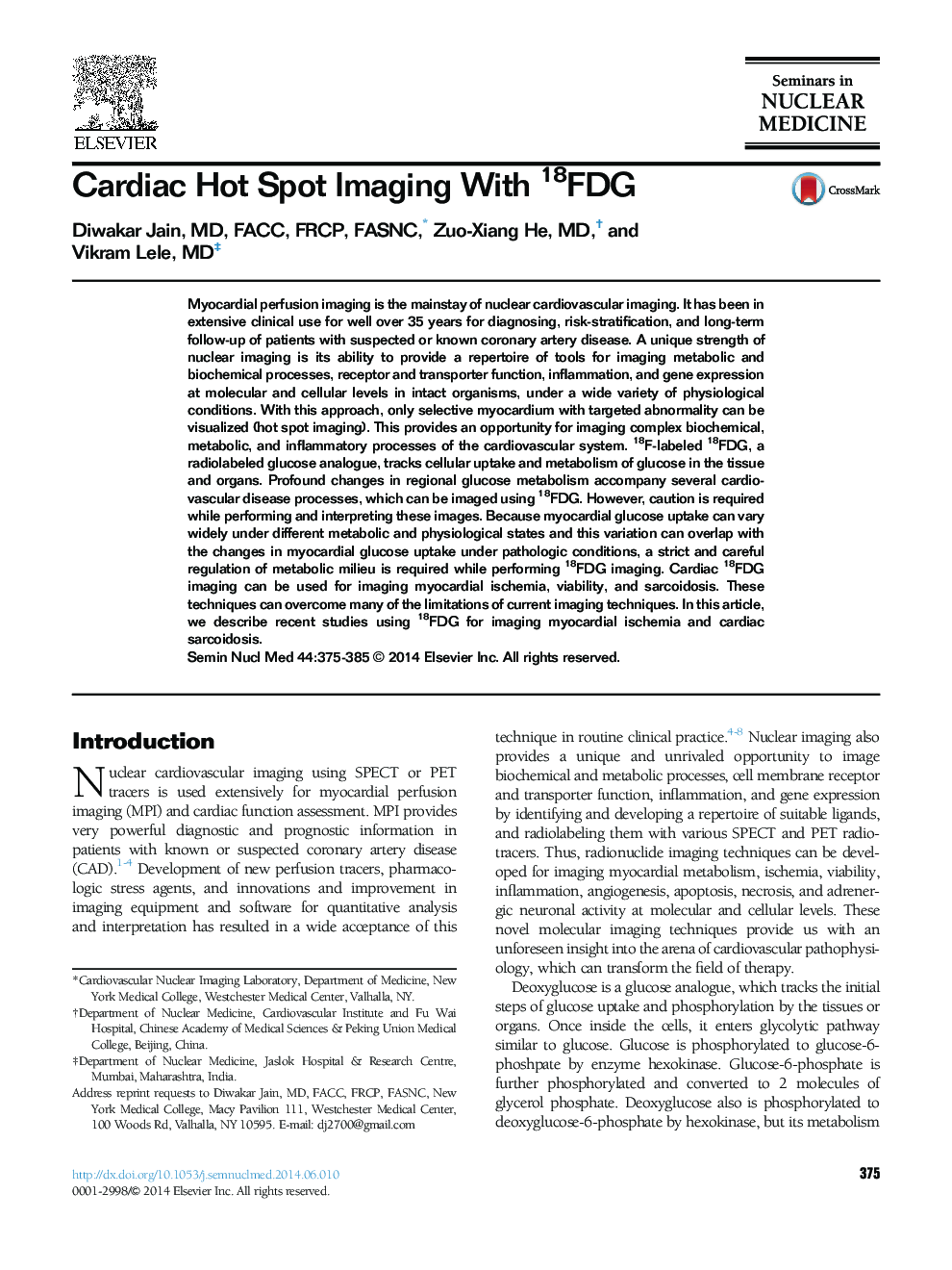| Article ID | Journal | Published Year | Pages | File Type |
|---|---|---|---|---|
| 4250912 | Seminars in Nuclear Medicine | 2014 | 11 Pages |
Abstract
Myocardial perfusion imaging is the mainstay of nuclear cardiovascular imaging. It has been in extensive clinical use for well over 35 years for diagnosing, risk-stratification, and long-term follow-up of patients with suspected or known coronary artery disease. A unique strength of nuclear imaging is its ability to provide a repertoire of tools for imaging metabolic and biochemical processes, receptor and transporter function, inflammation, and gene expression at molecular and cellular levels in intact organisms, under a wide variety of physiological conditions. With this approach, only selective myocardium with targeted abnormality can be visualized (hot spot imaging). This provides an opportunity for imaging complex biochemical, metabolic, and inflammatory processes of the cardiovascular system. 18F-labeled 18FDG, a radiolabeled glucose analogue, tracks cellular uptake and metabolism of glucose in the tissue and organs. Profound changes in regional glucose metabolism accompany several cardiovascular disease processes, which can be imaged using 18FDG. However, caution is required while performing and interpreting these images. Because myocardial glucose uptake can vary widely under different metabolic and physiological states and this variation can overlap with the changes in myocardial glucose uptake under pathologic conditions, a strict and careful regulation of metabolic milieu is required while performing 18FDG imaging. Cardiac 18FDG imaging can be used for imaging myocardial ischemia, viability, and sarcoidosis. These techniques can overcome many of the limitations of current imaging techniques. In this article, we describe recent studies using 18FDG for imaging myocardial ischemia and cardiac sarcoidosis.
Related Topics
Health Sciences
Medicine and Dentistry
Radiology and Imaging
Authors
Diwakar MD, FACC, FRCP, FASNC, Zuo-Xiang MD, Vikram MD,
